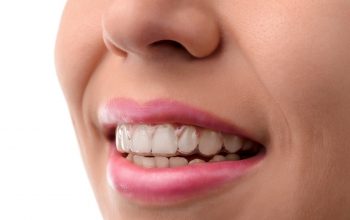


Have you ever heard a popping or clicking sound when you open your mouth very wide? Or perhaps experienced slight pain as you reach the limit of your jaw muscles? If so, you may be a part of the 20-30% of the population who are affected by temporomandibular joint disorder (TMJD).
- “What is TMJD?” Simply put, TMJD is an inflammation of one or both of the joints connecting your jawbone to your skull. The bones are held together by a complex series of ligaments, and an even more complex set of tendons and muscles provide the wide range of motion we use for speaking, chewing, and emoting. The inflammation causes uneven motion of the bones, which leads to the pops and clicks associated with TMJD.
- “What causes TMJD?” The exact cause of TMJD is unknown. The proper alignment of the bite pattern is a likely culprit, since an uneven bite pattern can over- or under-work certain areas of the musculature, leading to over- or under-compensation by other areas, which can cause inflammation or soreness as well as uneven strength distribution across the joint itself. TMJD is often linked with nightly teeth-grinding (bruxism), but it’s unclear which is a cause and which is a symptom.
- “Can anything be done?” TMJ specialists can diagnose TMJD, ascertain the extent of the condition, and recommend TMJ exercises you can do to alleviate the discomfort and noticeable effects of TMJD. As misunderstood as the condition is, however, a TMJ specialist is often the last stop in the chain, as many people first seek out the advice of their dentist. In fact, given the proximity of the joint to the ear, the pain of TMJD is often assumed to be an ear infection, and a number of referrals to TMJ specialists come from audiologists.
Luckily, the best treatment for TMJ disorder is time. The overwhelming majority of cases resolve themselves in a few years, with no permanent damage. The pain and discomfort can be easily managed with exercises and anti-inflammatory pain medication. Surgery is an extreme last resort, and is only necessary in a minuscule percentage of cases. More can be found here: bullmooseorthodontics.com

